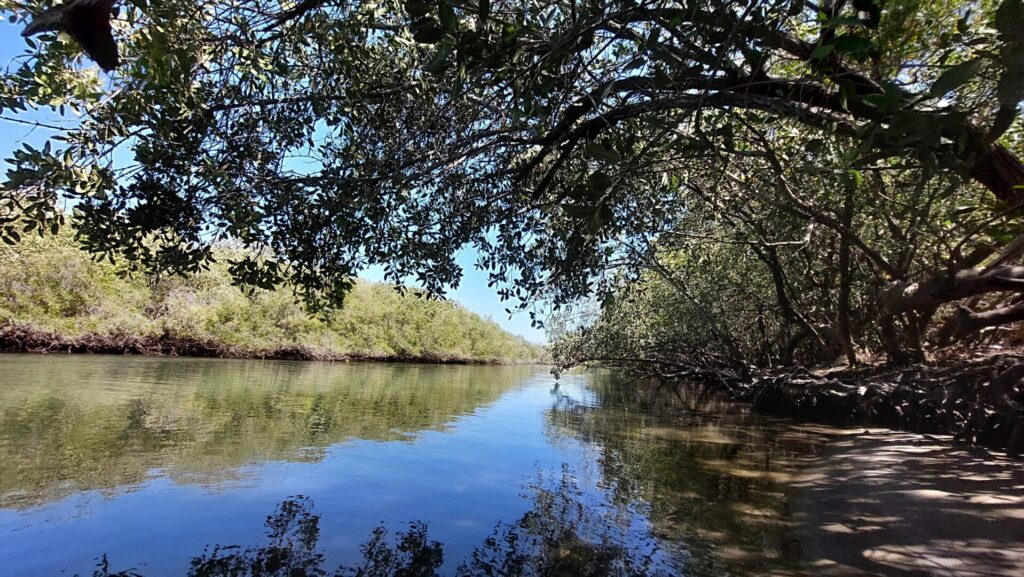The lagoon system of the Santa Maria Bayin AngosturaSinaloa, Sinaloa, has an area of 9,051.28 hectares of mangrove swamps, where the Secretary of Welfare and Sustainable Development, in cooperation with the College of Environmental Engineers of Mexico and the German Society for International Cooperation (GIZ) are developing a project to learn more about the carbon pool of this ecosystem.
These agencies and organizations are developing a coastal vulnerability analysisThe objective is to determine the dimensions of the carbon reservoir contained in a specific area of the mangroveThe project is designed to prioritize those areas that are susceptible to restoration, conservation and sustainable management through a participatory process involving the communities.
IKI Alliance Mexico highlights that to date several activities have been carried out, including three workshops to analyze the problems of the lagoon system from the territory and its contribution to climate action together with different actors such as government, civil society, academia, communities and children.
The first workshop was held in order to identify the economic, cultural and social actions carried out by the stakeholders on the site for the preservation of the system, with the participation of inhabitants and workers of the area, representatives of the National Commission of Natural Protected Areas (Comisión Nacional de Áreas Naturales Protegidas)the Secretariat of Aquaculture and Fisheries, Pronatura A.C. and the Secretariat of Tourism.
Problems identified:
- The lagoon system is an area of economic use for fishing.
- Aquaculture is the main phenomenon affecting the lagoon system.
- There is a need to strengthen the monitoring of the application of standards.
- Civil society is disconnected from mangrove efforts.
After identifying and raising awareness of these problems, the participants were provided with various alternatives, projects and initiatives to resolve conflicts.
Subsequently, in a second workshop with municipal and state public officials, indicators were developed to solve the pollution problem and some actions aimed at ecological management were shared.
The third workshop was a community workshop, with the participation of local workers, women and children, where the places that are perceived to have the greatest environmental deterioration were identified, accompanied by dynamics that made it possible to identify the actors, economic activities and sites of interest.
In addition, necessary actions were presented by the attendees for the conservation of the lagoon system.
The results of these workshops, together with the bibliographic analysis and the sampling of the mangrove area, will make it possible to quantify the carbon reservoir. The evaluation and protection methodology will serve as support for replication in other coastal regions of the country with similar problems and catalyze blue carbon opportunities.
Why is the mangrove important?
- Mangroves are a natural shield against climate change because they are ecosystems that serve as carbon sinks.
- Blue carbon ecosystems cover less than 0.5% of the world's marine area, but can sequester more carbon than mature tropical forests.
- It is possible that these ecosystems capture the equivalent of almost half of the emissions generated by global transportation.
Mexico is the fourth country with the largest extension of mangroves.
Source: IKI Alliance


